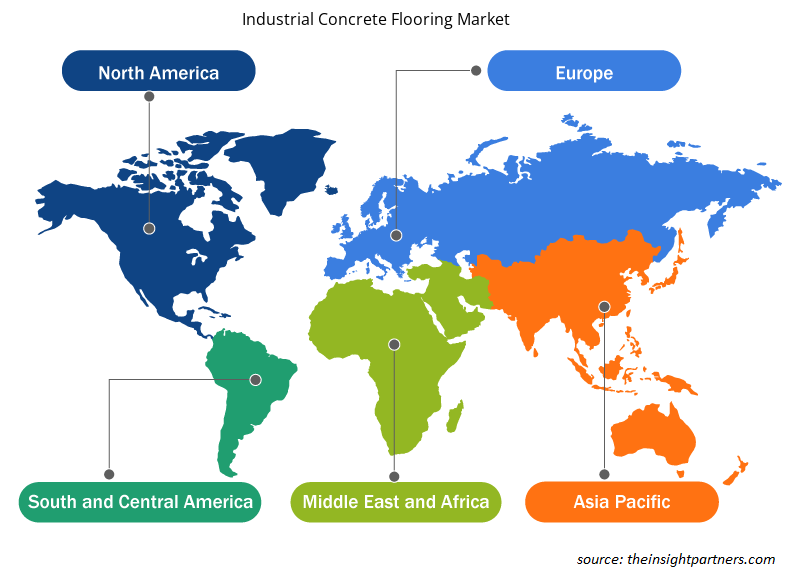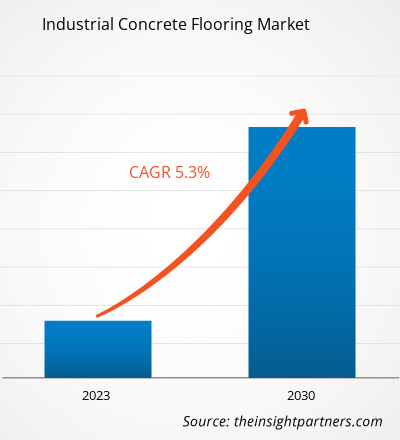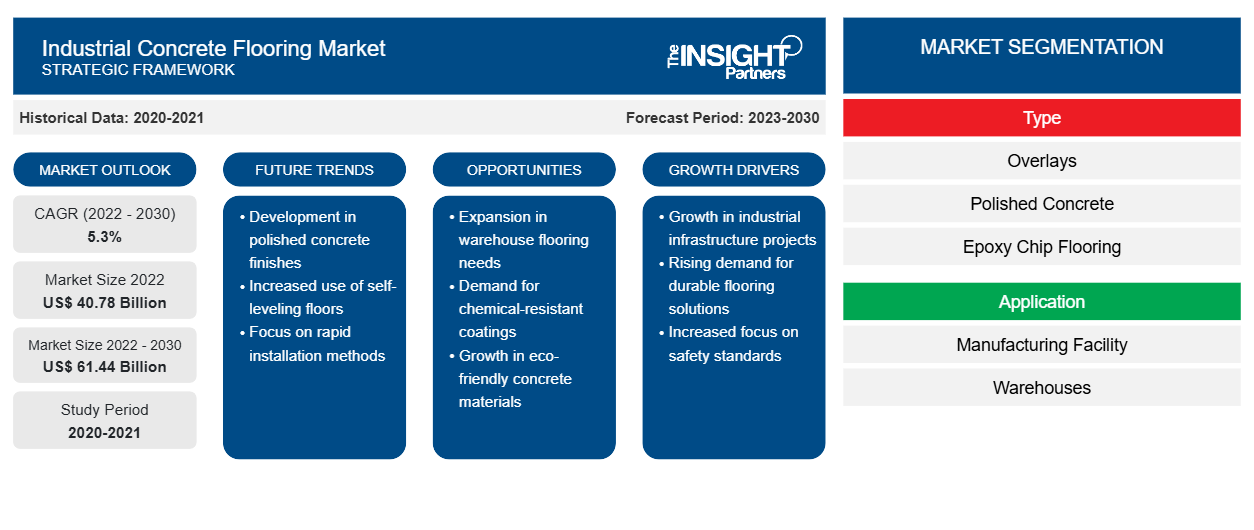[研究报告] 工业混凝土地板市场规模预计将从 2022 年的 407.8459 亿美元增长到 2030 年的 614.4269 亿美元;预计 2022 年至 2030 年的复合年增长率为 5.3%。
市场分析
近年来,受商业和工业环境需求不断增长的推动,全球工业混凝土地板市场经历了显著增长。工业混凝土地板市场已成为建筑行业的一个重要领域,在为各种工业应用提供耐用且有弹性的地板解决方案方面发挥着关键作用。工业混凝土地板的特点是坚固耐用,非常适合需要高强度、耐重载和持续磨损的环境。该行业适用于各种行业,包括制造、运输、仓储和配送中心,地板的可靠性和使用寿命至关重要。工业混凝土地板可以根据特定要求进行定制,包括防滑表面、耐化学性和装饰性饰面。这种灵活性使工业混凝土地板能够满足不同行业的独特需求,使其成为广泛应用的多功能选择。
随着经济不断发展和城市化,工业设施的建设和扩建也随之激增,对可靠、高性能地板解决方案的需求也随之增加。工业混凝土地板市场通过技术发展做出了回应,在混凝土混合物和施工技术方面融入了创新,以满足现代工业不断变化的需求。
增长动力与挑战
制造业是工业混凝土地板的主要应用领域之一。制造业正在蓬勃发展,为工业混凝土地板市场的增长提供了许多机会。在过去十年中,抛光混凝土已成为各种工业环境中的理想地板选择。抛光混凝土在仓库、制造厂、医疗保健设施、展厅和其他人流量大的地方得到广泛使用。抛光混凝土非常经济,尤其是对于大型制造设施而言,同时它还具有许多好处。在工业环境中,抛光混凝土用于创建低维护、耐用的地板解决方案,可以承受高人流量、重型机械和其他苛刻的条件。由于企业优先考虑耐用性、成本效益、功能性和美观性,抛光混凝土作为工业场所的地板解决方案仍然处于领先地位。抛光混凝土的各种好处包括成本效益、易于维护、美观、操作效率、更高的防滑性和反光质量。抛光混凝土的防滑性达到或超过行业标准。抛光混凝土提供光滑、均匀的表面,可提高物料搬运设备的效率。抛光混凝土的高光泽度可减少摩擦,降低机械磨损,从而延长使用寿命并最大限度地降低机械维护成本。这种改进的运营效率可节省时间和金钱,并通过最大限度地降低事故风险来创造更安全的工作环境。因此,环氧地板在制造业中的各种优势促成了全球工业混凝土地板市场的规模。
在医院、诊所和医疗办公室等医疗机构中,抛光混凝土地板因其卫生性能和易于清洁而成为理想选择。抛光混凝土的无缝、无孔表面可最大限度地减少细菌和霉菌的生长,从而为患者和员工创造更健康的环境。抛光混凝土的耐用性和低维护性使其成为这些苛刻环境的经济高效的解决方案。此外,工业和仓库环境通常涉及使用不同的化学品。抛光混凝土地板可抵抗化学品泄漏;它们可防止损坏并确保地板的使用寿命更长。总体而言,在工业环境中,抛光混凝土提供了广泛的优势和设计选择,使其成为各种工业应用的理想选择。因此,对抛光混凝土地板的需求正在强劲增长,越来越多的客户选择抛光混凝土作为工业地板。因此,对工业地板抛光混凝土的需求不断增长主要推动了工业混凝土地板市场的增长。
市场上替代产品的供应可能会威胁公司的市场地位和产品供应。市场上有各种各样的工业地板产品,它们具有不同的优势。混凝土地板的替代产品包括水磨石地板和橡胶地板等。水磨石地板将大理石、玻璃、石英、花岗岩或其他材料的碎片安全地结合在粘合材料内。水磨石地板有很多优点。由于其美观和耐用性,它被用于不同的工业应用中。这种地板一直以其经典的外观、耐用性、长寿命和低维护成本而闻名。橡胶是另一种在工业环境中理想的地板选择材料。工业橡胶垫和地板即使在潮湿时也会增加表面的摩擦力。工业地板中的橡胶材料也具有足够的物理耐久性,可以同时承受来自活动机械和大量人流的强烈物理冲击。此外,橡胶的弹性使橡胶地板成为抗疲劳应用的绝佳舒适选择。工业橡胶地板垫超耐用、防潮,具有出色的户外耐久性。根据应用行业的具体需求,选择不同的地板选项。因此,市场上替代产品的供应可能会抑制全球工业混凝土地板市场的增长。
定制此报告以满足您的需求
您可以免费定制任何报告,包括本报告的部分内容、国家级分析、Excel 数据包,以及为初创企业和大学提供优惠和折扣
-
获取此报告的关键市场趋势。这个免费样品将包括数据分析,从市场趋势到估计和预测。
报告分类和范围
“2030 年全球工业混凝土地板市场”是一项专业而深入的研究,重点关注市场趋势和机遇。该报告旨在提供市场概述,并根据类型、应用、最终用途行业和地理位置对市场进行详细细分。全球工业混凝土地板市场在过去几年中取得了显着增长,预计在预测期内将继续保持这一趋势。该报告提供了全球工业混凝土地板使用情况的关键统计数据,以及主要地区和国家的需求。它还对影响主要地区和国家市场表现的各种因素进行了定性评估。该报告还包括对主要市场参与者及其关键战略发展的全面分析。还包括对市场动态的几项分析,以帮助确定关键驱动因素、全球工业混凝土地板市场趋势和有利可图的机会,进而有助于确定重要的收入来源。
生态系统分析和波特五力分析也提供了全球工业混凝土地板市场分析的360度视角,有助于了解整个供应链和影响市场增长的各种因素。
节段分析
全球工业混凝土地板市场根据类型、应用和最终用途行业进行细分。就类型而言,市场细分为覆盖层、抛光混凝土、环氧碎石地板等。根据最终用途行业,市场分为制造工厂、仓库和其他。根据最终用途行业,市场细分为食品和饮料、化学品、医疗保健、运输和其他。
根据类型,环氧碎石地板细分市场在 2022 年占据了全球工业混凝土地板市场的显著份额。环氧地板看起来很坚固,可以承受最苛刻的工业环境,保护设施表面和工厂机械免受磨损、化学品、紫外线、湿气和事故的影响。形成环氧树脂的两个主要成分是树脂和硬化剂。根据应用,制造设施细分市场在 2022 年以显著的市场份额领先市场。混凝土地板系统广泛安装在制造设施中,以获得美观和重新铺面。制造设施中混凝土地板系统的安装取决于某些标准,例如设施类型、设施中使用的产品类型以及混凝土系统的耐用性。根据最终用途行业,食品和饮料细分市场在 2022 年以显著的市场份额领先市场。食品和饮料行业使用重型设备,例如啤酒厂的大型发酵罐和用于食品加工的重型机械。始终需要耐用的混凝土地板来承受这些机器的重量和持续使用,以降低开裂或损坏的风险。
区域分析
工业混凝土地板市场报告提供了详细的区域市场概况。亚太地区占全球工业混凝土地板市场份额的很大一部分。2022 年该地区的市场价值约为 150 亿美元。中国是该地区市场增长的主要贡献者。预计北美也将出现显着增长,到 2030 年将达到约 120 亿美元。此外,在欧洲,工业混凝土地板得到了广泛使用。预计欧洲工业混凝土地板市场在 2022 年至 2030 年的复合年增长率约为 5%。
工业混凝土地板市场区域洞察
Insight Partners 的分析师已详尽解释了预测期内影响工业混凝土地板市场的区域趋势和因素。本节还讨论了北美、欧洲、亚太地区、中东和非洲以及南美和中美洲的工业混凝土地板市场细分和地理位置。

- 获取工业混凝土地板市场的区域具体数据
工业混凝土地板市场报告范围
| 报告属性 | 细节 |
|---|---|
| 2022 年市场规模 | 407.8亿美元 |
| 2030 年市场规模 | 614.4亿美元 |
| 全球复合年增长率(2022 - 2030 年) | 5.3% |
| 史料 | 2020-2021 |
| 预测期 | 2023-2030 |
| 涵盖的领域 |
按类型
|
| 覆盖地区和国家 |
北美
|
| 市场领导者和主要公司简介 |
|
工业混凝土地板市场参与者密度:了解其对业务动态的影响
工业混凝土地板市场正在快速增长,这得益于终端用户需求的不断增长,而这些需求又源于消费者偏好的不断变化、技术进步以及对产品优势的认识不断提高等因素。随着需求的增加,企业正在扩大其产品范围,进行创新以满足消费者的需求,并利用新兴趋势,从而进一步推动市场增长。
市场参与者密度是指在特定市场或行业内运营的企业或公司的分布情况。它表明在给定市场空间中,相对于其规模或总市场价值,有多少竞争对手(市场参与者)存在。
在工业混凝土地板市场运营的主要公司有:
- 弗里克斯公司
- Becosan 英国有限公司
- Twintec 集团有限公司
- Primekss 新加坡航空
- 斯坦福工业混凝土地板有限公司
免责声明:上面列出的公司没有按照任何特定顺序排列。

- 获取工业混凝土地板市场顶级关键参与者概览
行业发展和未来机遇
合作、收购和新产品发布是全球工业混凝土地板市场参与者采用的一些突出策略。
- 2023 年 5 月,Primekss SIA 开设了一家混凝土研发中心。Primekss 混凝土研发中心是波罗的海和东欧最大的以科学为基础的私人混凝土研究中心。它提供 PrimX 混凝土成分、测试新鲜和硬化性能以及开发质量控制方面的专业知识。
- 2022 年 12 月,RCR Industrial Flooring 收购了位于阿尔萨斯的 Solastra,这是一家知名的连续地板公司。自 1984 年以来,Solastra 已生产了超过 600 万平方米的树脂地板,在各个工业领域享有盛誉,并因其在树脂涂层系统方面的技术专长而受到认可。
竞争格局和主要公司
Fricks Co、Becosan UK Ltd、Twintec Group Ltd、Primekss SIA、Stanford Industrial Concrete Flooring Ltd、RCR Industrial Flooring SLU、Sika AG、Sintokogio Ltd、UltraTech Cement Ltd 和 Concretech One 是全球工业混凝土地板市场报告中分析的一些主要参与者。
- 历史分析(2 年)、基准年、预测(7 年)及复合年增长率
- PEST和SWOT分析
- 市场规模、价值/数量 - 全球、区域、国家
- 行业和竞争格局
- Excel 数据集
近期报告
客户评价
购买理由
- 明智的决策
- 了解市场动态
- 竞争分析
- 客户洞察
- 市场预测
- 风险规避
- 战略规划
- 投资论证
- 识别新兴市场
- 优化营销策略
- 提升运营效率
- 顺应监管趋势























 获取免费样品 - 工业混凝土地板市场
获取免费样品 - 工业混凝土地板市场